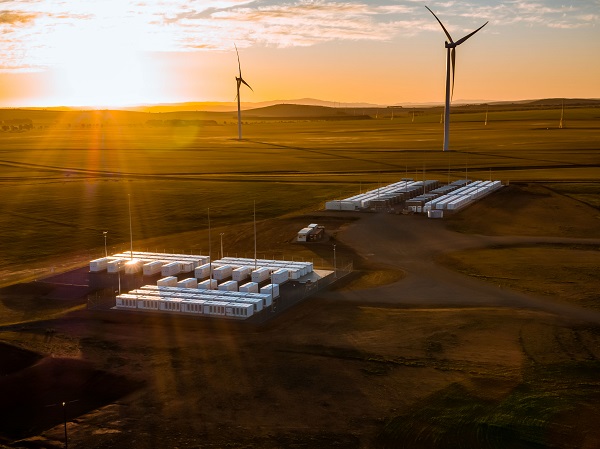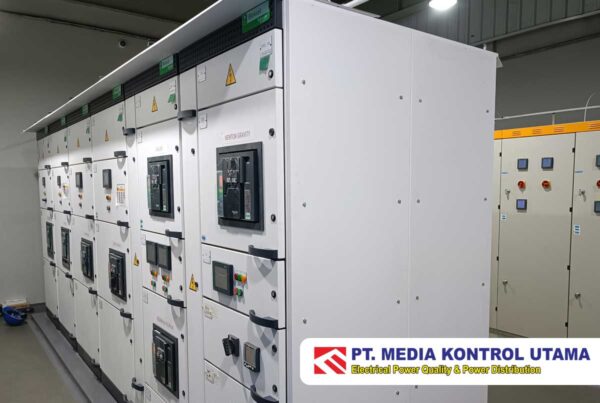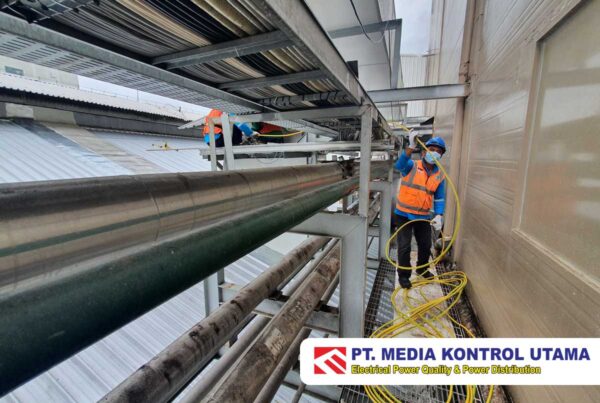Electricity Demand Management: Future Challenges and Solutions for Growing Needs
As the global population continues to grow and urbanization accelerates, the demand for electricity is set to rise dramatically. According to the International Energy Agency (IEA), global electricity demand is expected to increase by 2.1% per year until 2040, nearly doubling the current consumption levels.
This surge in energy consumption presents a significant challenge for power systems worldwide. To ensure a reliable and efficient energy supply, it’s crucial to address these challenges head-on with innovative solutions.

ABB Power Scale – PT Media Kontrol Utama
The Challenge of Increasing Electricity Demand
The increase in electricity demand is driven by several factors. Urban areas are expanding rapidly, and with them, the number of residential, commercial, and industrial consumers. The United Nations predicts that by 2050, 68% of the world’s population will live in urban areas, up from 55% in 2018. This rapid urbanization will significantly increase the demand for energy, particularly in developing countries where infrastructure may not be equipped to handle such growth.
Moreover, the proliferation of electric vehicles (EVs) is adding to the demand. The International Energy Agency (IEA) reported that the global electric car fleet exceeded 10 million vehicles in 2020, and this number is expected to grow exponentially in the coming decades. This shift towards electrification is essential for reducing carbon emissions, but it also places additional strain on power grids, especially during peak charging times.
Case Study: California’s Flex Alert Program
What is Flex Alert Program?
As by California ISO, Flex Alert is a call to consumers to voluntarily cut back on electricity and shift electricity use to off-peak hours (normally after 9 p.m.). As part of an educational and emergency alert program, Flex Alerts inform consumers about how and when to conserve electricity.
California, known for its progressive approach to energy management, offers a prime example of demand response in action. During the summer of 2020, California faced extreme heatwaves that pushed electricity demand to its limits. The state’s grid operator, California Independent System Operator (CAISO), issued several Flex Alerts, urging consumers to voluntarily reduce their electricity use during peak hours.
These alerts, combined with incentives like lower electricity rates for off-peak usage, successfully prevented rolling blackouts. The Flex Alert program highlights how consumer behavior can be influenced to manage demand more effectively, reducing the strain on the grid during critical periods.

Flex Alert Program – California ISO
Electricity Demand Response: A Strategic Approach
One of the key strategies to manage growing demand is demand response (DR). DR programs encourage consumers to reduce or shift their electricity usage during peak periods, helping to balance supply and demand. These programs can be highly effective in preventing grid overloads and ensuring a steady supply of electricity without the need for additional, often costly, generation capacity.
Case Study: The UK’s National Grid and Demand Side Response
In the UK, the National Grid has implemented a Demand Side Response (DSR) program that involves large industrial and commercial energy users. Participants agree to reduce their energy consumption or switch to on-site generation during peak demand periods in exchange for financial incentives. This approach has proven effective in maintaining grid stability and avoiding the need for additional power plants.
Data from the National Grid shows that during peak periods, DSR participants can reduce demand by up to 1.8 GW, enough to power over a million homes. This capacity is crucial, especially during winter months when demand is highest.
Smart Metering: Enhancing Efficiency and Awareness
Smart metering is another essential tool in managing electricity demand. Unlike traditional meters, smart meters provide real-time data on energy usage, allowing both consumers and utilities to monitor consumption patterns more effectively. This increased visibility enables more efficient energy use and helps utilities to better forecast demand, optimizing the distribution of electricity across the grid.
Case Study: Italy’s Smart Metering Rollout
Italy was one of the first countries in the world to roll out smart meters on a large scale. By 2011, nearly 95% of Italian households were equipped with smart meters. This early adoption has provided valuable data on energy consumption patterns, allowing utilities to manage demand more effectively. The result has been a more resilient and efficient power system, with reduced energy waste and improved grid stability.
Data from Enel, Italy’s largest utility, shows that the widespread use of smart meters has led to a significant reduction in technical and non-technical losses, which are estimated to have decreased by around 4%. This reduction translates into substantial cost savings and a more reliable electricity supply for consumers.

Enel Open Meter Reality – Climate Action
Energy Storage: Bridging the Gap Between Supply and Demand
To complement demand response and smart metering, energy storage technologies are playing an increasingly vital role. Advanced batteries and other storage systems allow excess energy generated during low-demand periods to be stored and used when demand spikes. This capability is particularly important for integrating renewable energy sources, like solar and wind, which can be intermittent. By storing energy for later use, these technologies help stabilize the grid and reduce reliance on fossil fuels.
Case Study: Australia’s Hornsdale Power Reserve
The Hornsdale Power Reserve in South Australia, often referred to as the world’s largest lithium-ion battery, is a landmark project in energy storage. The 150 MW/194 MWh battery, developed by Tesla, was commissioned in 2017 to provide grid stability and backup power in case of outages. Since its inception, the Hornsdale Power Reserve has proven its value by reducing the need for expensive gas-peaking plants and providing critical support during periods of high demand.
Data from the Australian Energy Market Operator (AEMO) indicates that the battery has saved consumers over $150 million in energy costs in its first two years of operation. It has also played a crucial role in balancing supply and demand, particularly during extreme weather events.

Hornsdale Power Reserve
Looking Ahead: A Sustainable Energy Future
As the demand for electricity continues to grow, it’s clear that a multifaceted approach is needed to manage the challenges ahead. By combining demand response, smart metering, and energy storage, we can create a more resilient and efficient power system. These solutions not only help meet the increasing demand but also pave the way for a sustainable energy future.
To ensure success, governments, utilities, and consumers must collaborate to implement these strategies. Investment in smart grid technologies, policy incentives for energy efficiency, and consumer education will be key to navigating the complexities of future electricity demand. By embracing these innovations, we can secure a reliable, affordable, and sustainable energy supply for generations to come.
Conclusion
As global electricity demand continues to rise, driven by urbanization, population growth, and the increasing adoption of electric vehicles, the challenges facing power systems are becoming more complex. However, these challenges also present opportunities for innovation. By integrating demand response strategies, deploying smart metering technology, and expanding energy storage capabilities, we can create a more resilient and efficient power grid that meets the needs of future generations.
The case studies from California, the UK, Italy, and Australia demonstrate that these solutions are not just theoretical—they are already making a significant impact in managing electricity demand and ensuring grid stability.
The future of energy management lies in the seamless integration of advanced technologies with proactive consumer engagement. The transition to a more sustainable and reliable electricity system requires collaboration between governments, utilities, and consumers.
While the challenges are substantial, the potential benefits—reduced energy costs, lower carbon emissions, and enhanced grid reliability—make it imperative to pursue these strategies with urgency and commitment. As we continue to innovate and adapt, I believe we can build a power system that not only meets the growing demand but also supports a cleaner, greener future.
For expert consultation, reach out to PT Media Kontrol Utama. Our experienced professionals are ready to help you maintain the reliability and safety of your electrical distribution system.
Reference :
- International Energy Agency (IEA):
For global electricity demand projections and data on electric vehicles.
IEA. (2021). World Energy Outlook 2021. Accessed 04 September 2024. - United Nations (UN):
For urbanization statistics and future projections.
United Nations, Department of Economic and Social Affairs. (2018). 2018 Revision of World Urbanization Prospects. Accessed 04 September 2024. - California Independent System Operator (CAISO):
For the Flex Alert program and its impact during the 2020 heatwaves.
CAISO. (2020). Flex Alerts and Rotating Outages. Accessed 04 September 2024. - National Grid (UK):
For data and case studies on the Demand Side Response (DSR) program.
National Grid. (2020). Future Energy Scenarios 2020. Accessed 04 September 2024. - Enel (Italy):
For details on Italy’s smart metering rollout and its impact.
Enel. (2011). The Evolution of Smart Metering in Italy. Accessed 04 September 2024. - Australian Energy Market Operator (AEMO):
For data on the Hornsdale Power Reserve and its economic and operational benefits.
AEMO. (2019). Hornsdale Power Reserve Impact Report. Accessed 04 September 2024.




